Collectors love opening packs of 2012 Goodwin Champions because there are so many opportunities to find unique trading cards the likes of which you cannot find anywhere else. Whether it be the Museum Pieces featuring artifacts from the Civil War or the 1888 Goodwin Champions Original Art set, there is loads of excitement to be found in Goodwin Champions packs. But there is one new type of trading card Upper Deck is putting out the likes of which collectors have never seen with the new “It Came From Outer Space” insert set that features actual meteorite fragments embedded into the trading card.
That’s right, some of the oldest material in the universe is now available for anyone who has ever looked at the stars and wondered, “What lies beyond?” These cards were available in packs of 2012 Goodwin Champions as redemption exchange cards and we have good news for those who have registered them as we have recently completed production of them. Next up, they will be transferred to our fulfillment center, reviewed for quality, packaged, addressed and shipped. We hope to have them all out by the holidays. The cards will be sent out randomly to customers who have registered to receive them. While there are equal quantities of each produced (except the two mini versions which are a bit more scarce), they total amount of cards is very limited meaning you may not see very many of a particular card popping up in the secondary market very often.
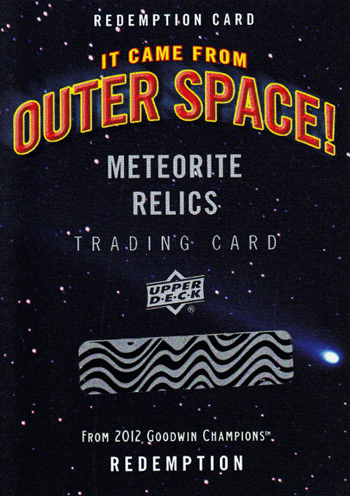
Redemption exchange cards can be registered online to receive a random “It Came From Outer Space” meteorite card.
Many of the meteorite fragments we have secured are quite famous. Here’s a look at the twenty card checklist and more information on the meteorites in the set.
ICFS-AL Allende Meteorite – The Allende meteorite is the largest carbonaceous chondrite ever found on Earth. The fireball was witnessed at 1:05 a.m. on February 8, 1969, falling over the Mexican state of Chihuahua. After breaking up in the atmosphere, an extensive search for pieces was conducted and it is often described as “the best-studied meteorite in history”. The Allende meteorite is notable for possessing abundant, large calcium-aluminum-rich inclusions, which are among the oldest objects formed in the Solar System.
ICFS-BA Bassikounou Meteorite – A bright fireball dropped this meteorite over Bassikounou, in the south-eastern corner ofMauritania,Africa around 4:00 a.m. local time on October 12, 2006.
ICFS-BE Bensour Meteorite – Eyewitness accounts from several nomads in the border region of Morocco and Algeria attest to a significant fall of many individual stones on February 11, 2002.
ICFS-DC Diablo Canyon Meteorite – The Diablo Canyon meteorite comprises many fragments of the asteroid that impacted the Barringer Crater in Arizona. Meteorites have been found around the crater rim, and are named for nearby Canyon Diablo, which lies about three to four miles west of the crater. The asteroid fell about 50,000 years ago and meteorite fragments have been found in that area since them.
ICFS-DD Dalgety Downs Meteorite – This meteorite was found in 1941 in Gascoyne District in Western Australia.
ICFS-GI Gibeon Meteorite – The meteorite was discovered by the Nama people and used by them to make tools and weapons. In 1836 the English captain J. E. Alexander collected samples of the meteorite in the vicinity of the Great Fish River and sent them to London. There John Herschel analyzed them and confirmed for the first time the extraterrestrial nature of the material.
ICFS-HE Henbury Meteorite – Henbury Meteorites Conservation Reserve is a protected area in the Northern Territory of Australia. The reserve contains twelve craters, which were formed when a fragmented meteorite hit the earth’s surface. Henbury is one of five meteorite impact sites inAustralia associated with actual meteorite fragments and one of the world’s best preserved examples of a small crater field. The site has been dated to 4.2-1.9 thousand years ago based on the cosmogenic terrestrial age of the meteorite.
ICFS-KK Korra Korrabes Meteorite – Korra Korrabes was discovered in 1996 in a dry river bed by a farmer in Namibia. Later searches yielded many more specimens and it is believed to be a very old meteorite.
ICFS-MI Millbillillie Meteorite – Another meteorite from Western Austrailia, the Millbillillie meteorite was observed to fall at about 1:00 p.m. in October, 1960 by two men opening a gate in the area. An object, they said, “with sparks coming off it” was observed to fall into a grassy plain. A search did not occur at the time, but approximately ten years later, a relative and friend of one of the original witnesses found the first two stones.
ICFS-MU Murchison Meteorite (Mini Short Print) – On September 28, 1969 at approximately 11:00 a.m. in Murchison, Australia, a bright fireball was observed to separate into three fragments before disappearing, leaving a cloud of smoke. It is one of the most studied meteorites due to its large mass, the fact it was an observed fall and it belongs to a group of meteorites rich in organic compounds.
ICFS-RI Richfield Meteorite – Discovered in Richfield, Kansas in 1983, this specimen was not known to be a meteorite until further study in 1995. During the study it was found that it contained clear and distinct chondrules, an indication that the meteorite contains some of the most pristine, original material in the solar system.
ICFS-SE Seymchan Meteorite – Near the settlement of Seymchan, this meteorite was discovered in 1967 by geologist F.A. Mednikov during a survey. The main mass was turned in to the Academy of Sciences of the USSR.
ICFS-SI Sikhote-Alin Meteorite – At 10:30 a.m. on February 12, 1947, eyewitnesses in Siberia observed a large meteorite brighter than the sun that came out of the north. It fell with deafening sound and a smoke trail that remained in the sky for several hours. The largest mass broke up in a violent explosion.
ICFS-TA Tatahouine Meteorite – In Foum Tatohouine, Tunisia, this meteorite fell on June 27, 1931 at 1:30 a.m. A fireball was seen to explode in the desert and hundreds of small fragments showered down on the desert near a village. Interestingly enough, the “Tatooine” scenes filmed in Star Wars: Episode IV were actually filmed in Tunisa and the town of Tatahouine created an inspiration so it was decided to be named as Luke Skywalker’s home planet.
ICFS-VA Vaca Muerta Meteorite – This meteorite was discovered in 1861 at Taltal, Chile. Much of the artifacts are believed to have been broken apart by 19th century miners in order to retrieve the metal-rich portion for smelting.
ICFS-VI Viedma Meteorite – A single, completely fusion crusted stone weighing 6900 grams was found by a gold prospector on Balneario el Condor beach. The finder supplied information from local newspapers of a large fireball glowing green and blue, seen travelling from over central Argentina that detonated over Viedma, Argentina on Nov. 5, 1998. The find location is at the terminus suggested in the newspaper.
ICFS-ZAG Zag Meteorite – Landing in Zag, Morocco in August, 1998, this meteorite continues to receive press as it contains water from our Solar System’s infancy.
ICFS-ZA Zagami Meteorite (Mini Short Print) – In October in 1962, this meteorite landed 10 feet away from a farmer who was trying to chase crows from his cornfield. He heard a tremendous explosion and was buffeted by a wave of pressure. He found the meteorite buried in a hole about 2 feet deep. It is the largest single Mars meteorite ever found at 40 pounds.
ICFS-2965 NWA (2965) Meteorite – Northwest Africa 2965 has spent a significant amount of time on earth as it is a fossil meteorite and it was discovered in Algeria.
ICFS-3140 NWA (3140) Meteorite – This is a very rare meteorite as it is considered an Ureilite meaning it is a very hard substance making it difficult to cut. That is because the piece was under tremendous pressure and sometimes ends up with tiny nano-diamonds in the matrix.
Instead of running to look at the night sky when wondering, “What lies beyond?” just head to your collection of Upper Deck’s “It Came From Outer Space” cards for the answer!

Containing the oldest materials in the Solar System, Upper Deck’s “It Came From Outer Space” meteorite cards give a whole new meaning to “vintage.”







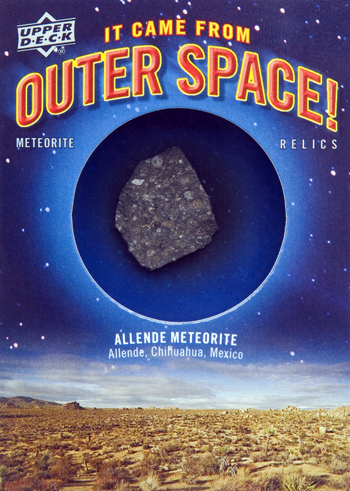
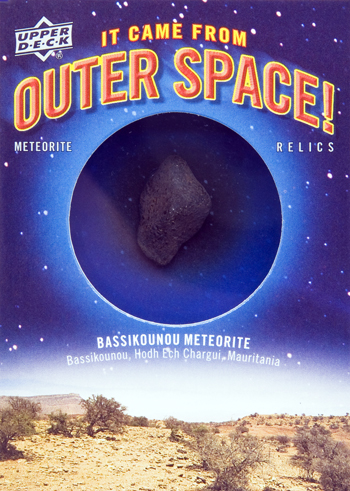
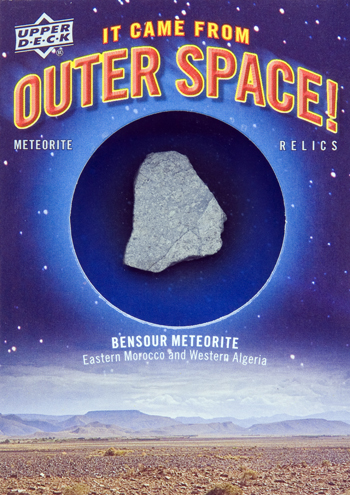
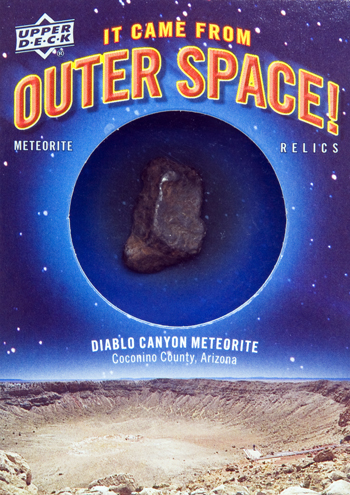
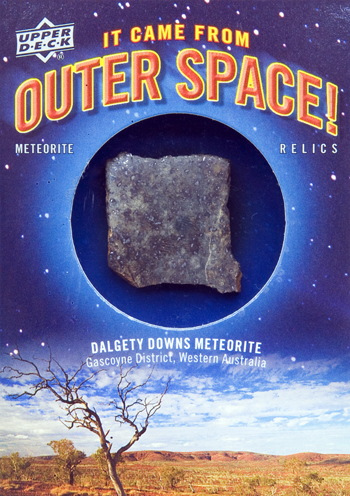
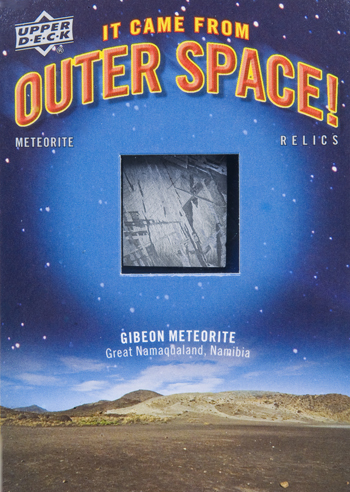
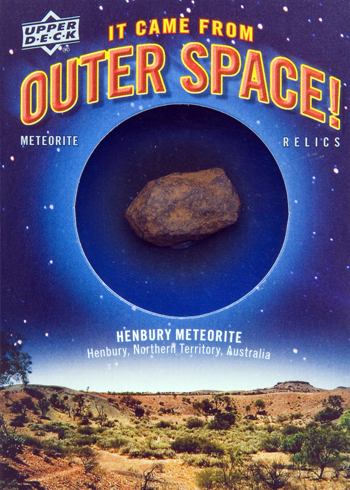
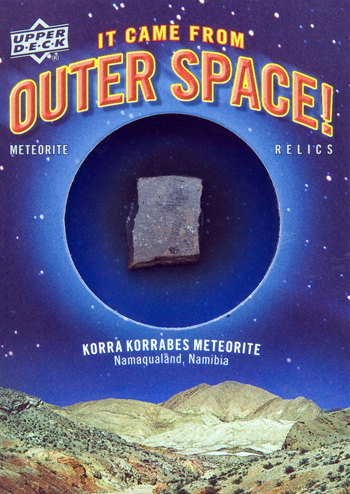
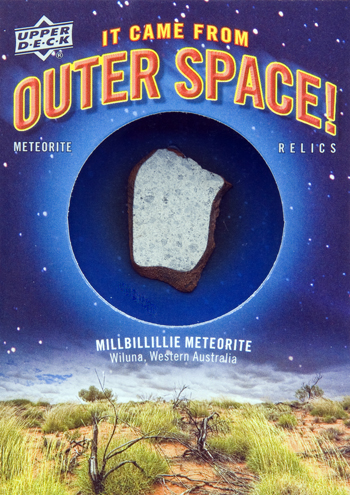
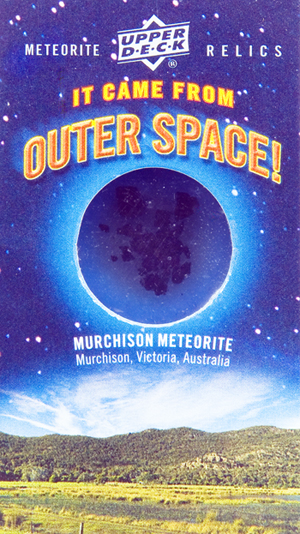
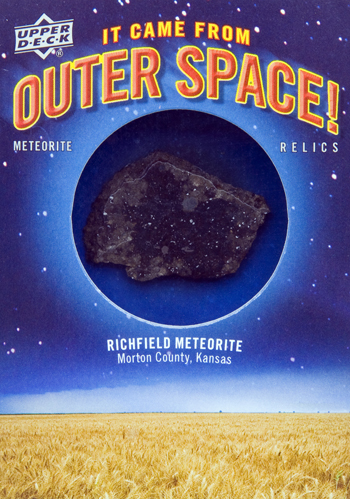
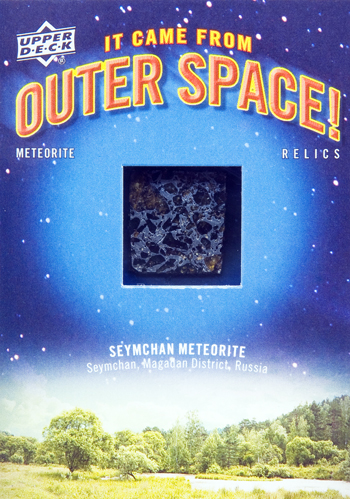
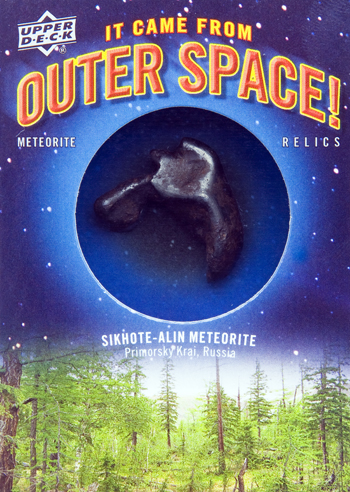
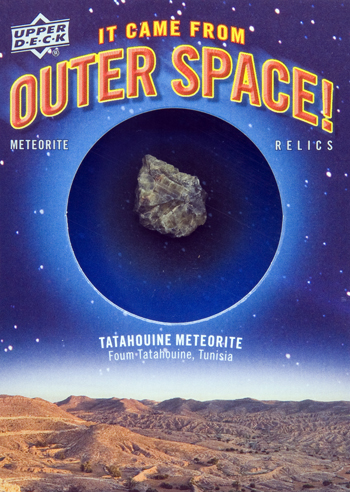
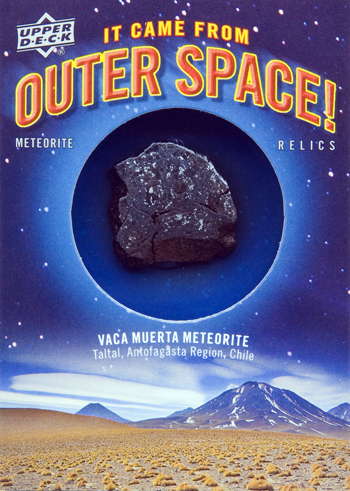
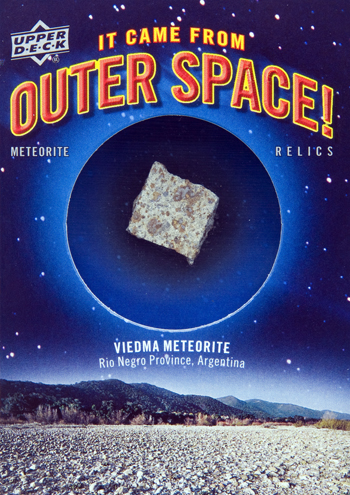
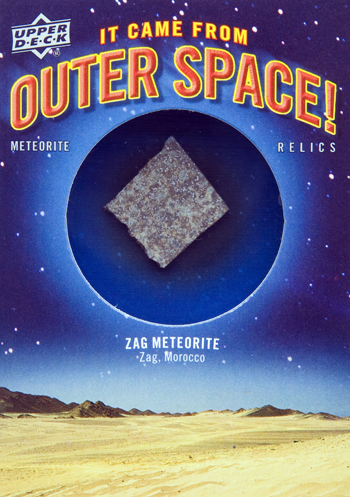
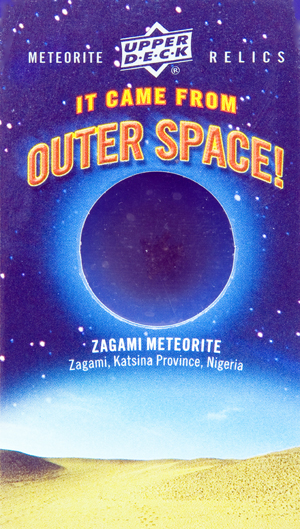
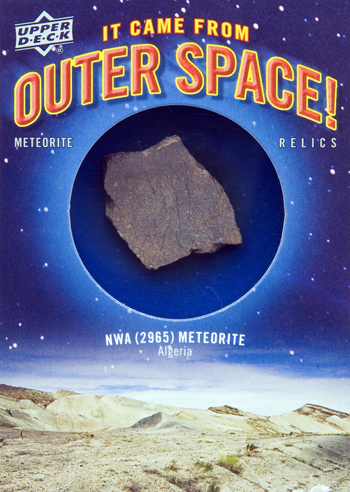
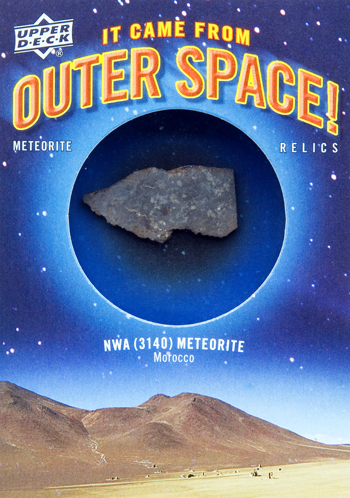

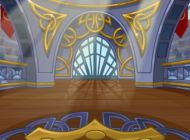

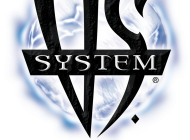






4 Comments
I want. That is all. =)
I really wish I had pulled one of these during my breaks of Goodwin. I got an Entomology card which I’m really excited to receive later on, but I still would have LOVED to get a meteorite card. Space has always fascinated me so much. Oh well, I may be able to find one someday at a reasonable price!
These are beautiful cards damn I want one
I was lucky enough to pull one of these great redemptions last night! is there a way to find out what has already been redeemed and how many of these cards were made?